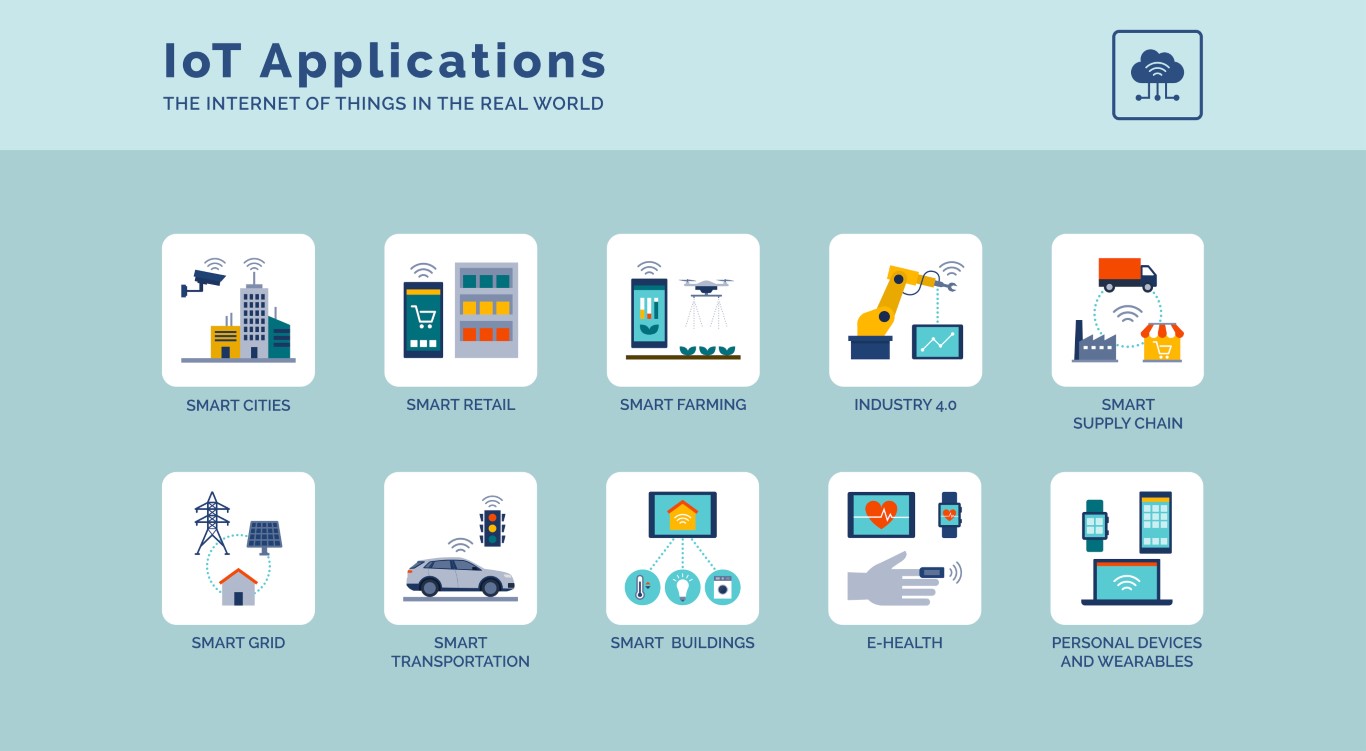Imagine walking into a smart home where the lights adjust themselves, the thermostat knows your preferred temperature, and your coffee maker starts brewing as soon as you step out of bed.
While the Internet of Things (IoT) promises a world of interconnected devices and seamless automation, the question remains: are the conveniences worth the potential risks?
As businesses and individuals embrace IoT applications to revolutionize daily tasks, the complexities and vulnerabilities of these interconnected systems raise critical concerns that demand attention.
Key Takeaways
- Real-time insights drive informed decision-making.
- Predictive maintenance saves costs and prevents failures.
- Seamless integration enhances communication and connectivity.
- Scalability supports growth without infrastructure changes.
Enhanced Data Analytics
To truly extract value from the vast amounts of data generated by IoT devices, a critical focus on enhancing data analytics is paramount. Many companies claim to leverage real-time insights and predictive analytics, but few truly deliver on these promises. The challenge lies not only in collecting data but also in interpreting it effectively to drive meaningful actions and decisions.
Real-time insights are often touted as a game-changer in the IoT landscape, offering the potential to react swiftly to changing conditions. However, the reality is that many organizations struggle to implement real-time analytics successfully. The ability to process data quickly and accurately is crucial for deriving actionable insights in a timely manner.
Predictive analytics holds immense potential for optimizing operations and improving decision-making processes. Yet, the effectiveness of predictive models is highly dependent on the quality of data inputs and the algorithms used. Without a solid foundation, predictive analytics can lead to misleading conclusions and ineffective strategies.
Improved Operational Efficiency
Enhancing operational efficiency within IoT applications requires a strategic approach that goes beyond surface-level optimizations. When aiming for improved operational efficiency, it's crucial to delve into the core functionalities of IoT systems to unlock their full potential. Cost savings and real-time monitoring play pivotal roles in achieving this goal.
- Cost Savings: While IoT implementation might require initial investment, the long-term cost savings through streamlined processes and predictive maintenance are substantial.
- Real-Time Monitoring: Constantly monitoring operations allows for immediate issue identification and resolution, preventing downtime and optimizing resource allocation.
- Predictive Maintenance: Utilizing IoT data for predictive maintenance schedules can prevent costly equipment failures and unnecessary downtime.
- Process Automation: Automating routine tasks not only saves time but also reduces errors, increasing overall operational efficiency.
- Data-Driven Decision Making: Leveraging real-time data insights enables informed decision-making, leading to optimized processes and improved outcomes.
Increased Productivity and Automation
Boosting productivity through streamlined automation processes is the cornerstone of maximizing IoT application advantages. Remote monitoring and smart automation are key components that can revolutionize how tasks are completed within various industries. While the concept of automation may initially raise concerns about replacing human jobs, the reality is that it can significantly enhance efficiency and output.
Imagine being able to remotely monitor all aspects of your production line in real-time, identifying bottlenecks or issues before they escalate. With smart automation, machines can communicate with each other, adjusting settings and processes without human intervention. This level of interconnectedness not only saves time but also reduces the margin of error, leading to higher-quality outputs.
However, it's crucial to approach automation with a strategic mindset. Blindly implementing IoT applications without understanding your specific needs can lead to unnecessary complexities. It's essential to tailor automation processes to suit your unique requirements, ensuring that they complement your existing workflow rather than disrupt it. When done right, increased productivity through automation can be a game-changer for your business.
Enhanced Decision-Making Capabilities
As you consider the benefits of streamlined automation for maximizing IoT application advantages, one can't overlook the critical role of enhanced decision-making capabilities in shaping the future of industries. In today's fast-paced business environment, data visualization plays a pivotal role in providing clear insights and aiding in making informed decisions.
Predictive maintenance, another key aspect, allows businesses to anticipate equipment failures before they occur, saving both time and money. Here are five essential points to ponder:
- Real-Time Insights: Instant access to data through IoT devices enables quick decision-making based on real-time information.
- Improved Efficiency: Enhanced decision-making capabilities lead to more efficient workflows and resource allocation.
- Cost Reduction: Predictive maintenance helps in reducing downtime and avoiding costly repairs.
- Strategic Planning: Data visualization tools assist in developing long-term strategies based on accurate data analysis.
- Competitive Edge: Businesses with advanced decision-making capabilities gain a competitive advantage in the market.
Embracing these capabilities is crucial for staying ahead in the era of IoT-driven digital transformation.
Streamlined Communication and Connectivity
Streamlining communication and connectivity in IoT applications demands a meticulous approach to ensure seamless data transfer and interaction between devices. Efficient data flow is crucial for IoT systems to function optimally, yet achieving this can be a complex endeavor. While the promise of seamless integration sounds appealing, the reality often involves navigating through compatibility issues, security vulnerabilities, and scalability challenges.
Ensuring efficient data exchange requires not only robust network infrastructure but also stringent protocols to safeguard information in transit. Achieving seamless integration among various devices and platforms demands a deep understanding of both hardware and software components, as well as a proactive approach to addressing potential bottlenecks before they impede communication.
In the realm of IoT, the quest for streamlined communication and connectivity is an ongoing journey rather than a final destination. Constant vigilance and adaptation are necessary to keep pace with the evolving landscape of technology. By prioritizing efficient data transfer and seamless integration, IoT applications can truly unlock their full potential.
Improved Customer Experience
Navigating through the intricacies of streamlined communication and connectivity in IoT applications leads us to scrutinize the impact of these technical foundations on the overall customer experience. When it comes to improved customer experience, the buzzwords of personalized interactions and seamless integration often dominate the discourse. However, let's delve deeper into whether these promises truly deliver value:
- Personalized Interactions: Are they genuinely tailored to your preferences, or just based on generic algorithms?
- Seamless Integration: Does it genuinely make your experience smoother, or does it add unnecessary complexities?
- Data Privacy Concerns: How much of your personal information is being used to create these personalized interactions?
- Customer Empowerment: Are these advancements actually empowering you as a consumer, or are they merely ways to increase profits?
- Long-Term Sustainability: Will these personalized experiences last, or are they just temporary tactics to capture your attention?
In the realm of improved customer experience through IoT applications, it's crucial to question the true benefits amidst the shiny promises.
Frequently Asked Questions
How Do Iot Applications Impact Cybersecurity and Data Privacy?
When using IoT applications, data encryption is critical to safeguard information from breaches. Conduct vulnerability assessments regularly to identify weak points and fortify security measures. Prioritize cybersecurity and data privacy to mitigate potential risks effectively.
What Are the Potential Challenges of Implementing Iot Applications in a Business Setting?
Implementing IoT applications in business operations can pose challenges like data security risks, compatibility issues, and high deployment costs. These hurdles may hinder efficiency and require careful planning and risk assessment for successful integration.
How Can Iot Applications Integrate With Existing Technology Infrastructure?
Integrating IoT applications with existing tech infrastructure can be tricky. You might face integration challenges and compatibility issues. It's crucial to plan meticulously, test thoroughly, and be prepared to adapt to ensure a smooth transition.
What Are the Long-Term Maintenance and Support Requirements for Iot Applications?
You need to consider the long-term maintenance and support requirements for IoT applications. Ensuring ongoing updates, security patches, and troubleshooting is crucial for the success of your IoT infrastructure. Neglecting maintenance can lead to system vulnerabilities and malfunctions.
How Can Businesses Ensure the Scalability and Flexibility of Iot Applications as Technology Advances?
To ensure scalability and flexibility of IoT applications as tech evolves, you must tackle scalability challenges head-on by anticipating growth needs. Implement agile practices, prioritize modular architectures, and leverage cloud solutions for enhanced adaptability and future-proofing.
Conclusion
So, you may be wondering if all this hype about IoT applications is really worth it. Well, let me tell you, the advantages are undeniable.
From enhanced data analytics to improved operational efficiency, the benefits are clear. Embracing modern technology and maximizing IoT applications can truly revolutionize your business operations and give you a competitive edge.
So why wait? Dive in and experience the advantages for yourself. Trust me, you won't regret it.

